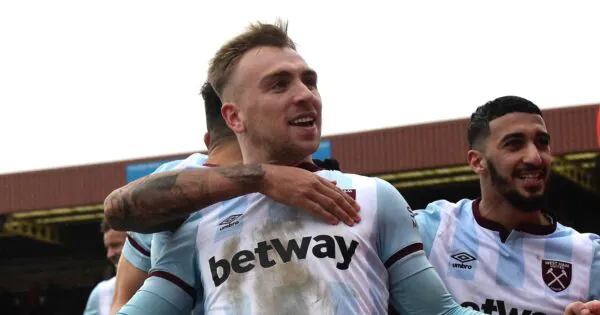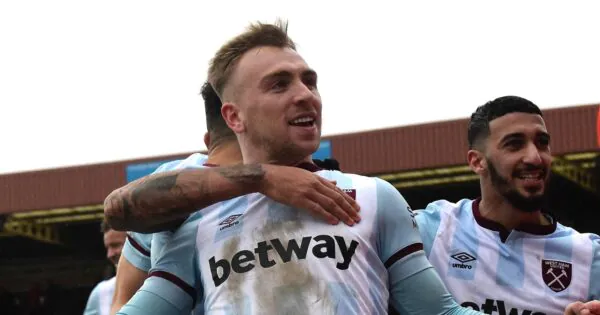
The most maligned type of move in FPL are single moves within the same price bracket, often pilloried as “sideways moves”. If you are as fanatical as I am about not wasting transfers restructuring your team, a lot of moves are going to be single moves. In this article I’m going to go over a few different types of moves and whether they are something that should be avoided. I’ll define two types of moves, and I’ll let them both be called sideways moves, but I’ll argue that only one type is bad. As we saw in more of a broad price bracket person, think about it: Why is that £7.5 million forward slot in your team? So you can easily move to another £7.5 million forward with one free transfer, isn’t it? And yet advocates of almost always using two transfers at a time seem to hold what amounts to the moral high ground in FPL pundit world. It’s also a high ground that’s too readily conceded when people say that price points help you get to any player in two moves. For me, what people should say is that price points help you get to a player you want in one move, or two at the very worst. That’s a much stronger claim.
So first we can concede there’s a grain of truth in the prevailing opinion: the sideways move narrowly construed is exactly what it’s perceived to be. For example, Mohamed Salah to Sadio Mane after a Mane haul is the classic sideways move narrowly construed. This type of sideways move is just chasing points, and shouldn’t be made unless the player you own becomes unavailable due to injury or suspension. I think we all agree on that.
Are Sideways Moves Broadly Construed Bad?
Where there’s a lot of confusion is what else, if anything, constitutes a bad sideways move. For example, is a move from Bruno Fernandes to Kevin de Bruyne a bad sideways move? Some might point to the fact that the motivation is often the same as for the Salah to Mane move: maybe de Bruyne just hauled, and it is tempting to move Fernandes out for the man in form. Therefore, they argue, it’s just as bad as the Salah to Mane move. But what if it’s not about form, but about Fernandes going into a very bad run of fixtures while de Bruyne has great fixtures? A lot of people will still be opposed, because they think you just shouldn’t ever sell a player like Fernandes who is “fixture proof”, “can haul against anyone”, is a “season keeper”, and every other cliché you hear every day in the FPL community. Or just for emotional reasons, like if they sell Fernandes, they’ll have to “hide behind the sofa” during Manchester United matches. But wouldn’t you rather do whatever is projected to gain you the most expected points?
The Non-Premium Case
Still, I like premium transfers to be pre-planned well in advance most of the time, and many seasons aren’t conducive to moving premium players around a lot. So let’s look at other types of moves. If it’s not a good season to spend a lot of transfers moving around premiums, I still don’t favour wasting transfers doing a lot of restructuring but will focus my transfers on moves further down my priority list. If I’ve got the right captain in place, not planning to make a premium transfer, and no injuries to address, then it’s time to look at underperforming mid-priced and budget attackers and see if any of them should be sold. If my cheaper attackers are performing well too, it may be time to look at a defender move. At first glance, these moves may seem to have very little upside, as opposed to using cheaper players as makeweights in double moves for new premium assets. However, if everyone has the same premiums, it may be precisely the cheaper players that can give you substantial gains when they return points. For example, if your captain Salah has 190% effective ownership (EO) in the top 10K, he could score 20 points and it would only gain you 2 points on your rivals; whereas a £4.5 defender who scores a clean sheet and two bonus points for a total of 8 points, but is only 10% EO in the top 10K, will gain you 7.2 points on your rivals. Therefore, buying a new cheap defender could actually be a surprisingly effective use of a transfer.
So is moving a budget attacker to a different budget attacker from a different team a bad move? We’ve all had cases where it didn’t work out, but if I own a budget attacker with poor upcoming fixtures, then replacing him with a player with good fixtures is simply playing the percentages. It might not always work, but to me it’s clearly not a waste of a transfer. Even trickier is when one player seems out of form and another seems in form. Obviously, it’s impossible to make general statements about whether to make the switch, but I don’t think you can write off these moves in general as “sideways moves” that you should never make. They may just be lower-priority than premium moves with obvious high upside.
Psychological Considerations
In addition, there is a psychological issue that causes people to prefer double or triple moves over single moves within the same price bracket. Managers are often worried when the deadline arrives and they have decided to do a simple single move from player A to player B, thinking, “I’ll be so upset with myself if player A outscores player B this week, when I could have just rolled the transfer and had two transfers next week.” On the other hand, if they did a double move, then doing nothing was not really an option, and even making one transfer and rolling the other might not have been something they strongly considered. If the double move backfires, they will more likely write it off as bad luck, thinking they had done something that should have been positive, and will point to the long-term benefits (e.g. having a new premium). It feels responsible, well-thought-out (even if it was only decided a few minutes before the deadline), and future-oriented. However, looking at an objective points prediction tool like FFScout RMT or FPL Review, it may not actually produce a greater gain in expected points than a single move that could have been made. Even if it does, if it’s for two transfers, it needs to produce at least twice as much of a gain to maintain the same average points gained per transfer.
As an example, to my amazement, Let’s Talk FPL Andy viewed one of his most successful moves, Said Benrahma to Ismaila Sarr for one free transfer, some weeks later with ambivalence bordering on negativity. This was even though Sarr outscored Benrahma 24-13 over just two weeks before the lifetime of the transfer was cut short with a wildcard. Showing how deeply immersed he was in the superiority-of-two-transfers philosophy (and he’s certainly not alone), Andy stated that he could only make such a risky move with “a wildcard in [his] back pocket” and didn’t intend to do similar moves since his wildcard had now been played. These moves should be the bread-and-butter of a Traditional FPL manager, especially one as fixture-centred as Andy, but instead the fear of wasting a transfer on a sideways move dominated the decision-making process.
I think a lot of top managers are also stuck in a mindset where single transfers are perceived as something done by casuals, who don’t plan ahead or don’t have the impulse control to ever roll a transfer. My belief is that a top manager should be equally adept at making single or multiple transfers effectively. A highly effective single transfer can be a real coup, and can also permit holding a transfer in your back pocket for a number of weeks. In other words, maybe immediately after a wildcard, you roll a transfer, then the next week you use just one of the two transfers and roll the other, and then do this as long as you can before a particularly excellent opportunity to use two transfers arises. Fábio Borges is exceptional at doing this. If you’re striving to maximise my favoured metric of points gained over the lifetime of a transfer (PGLT) per free transfer, you’ll also want to wait for a particularly good opportunity to increase the chance that you actually make a sufficient gain to justify the use of two transfers.
Conclusion
It’s time to rehabilitate the term “sideways move” and understand that it can be a perfectly reasonable part of a sound transfer philosophy. A well-constructed team using price points can be conducive to making all kinds of effective moves with just a single transfer.
